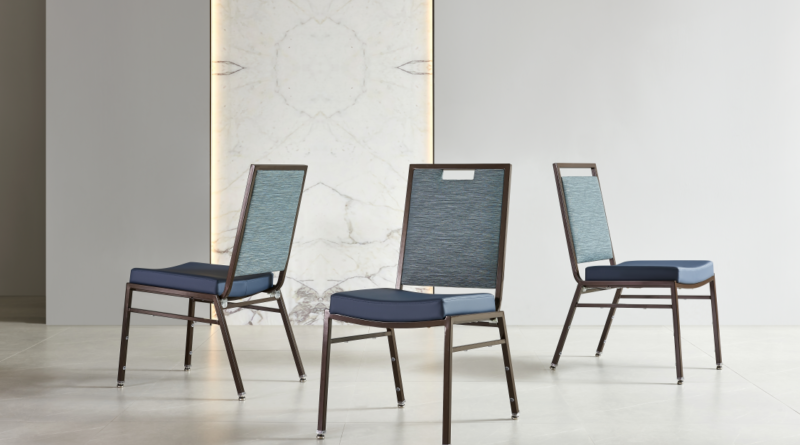Investing in Commercial Dining Chairs: Key Factors to Consider
Investing in commercial dining chairs is a significant decision for any dining establishment. The right chairs not only impact the comfort and satisfaction of your guests but also affect the overall aesthetics and functionality of your space. Here are key factors to consider to ensure you make a smart investment in commercial dining chairs.
1. Durability and Quality
- Material Selection: Choose high-quality materials that can withstand the wear and tear of commercial use. Metals like steel or aluminum, durable hardwoods, and high-impact plastics are ideal for ensuring longevity.
- Construction and Reinforcement: Look for chairs with reinforced joints and sturdy frames. Well-constructed chairs with strong fastenings and solid joinery are less likely to wobble or break over time.
- Finish and Coating: Consider finishes and coatings that protect against scratches, stains, and moisture. Powder-coated metals and treated woods can enhance the durability of the chairs.
2. Comfort and Ergonomics
- Seat and Backrest Padding: Opt for chairs with comfortable padding and support. High-density foam or gel cushions provide better comfort, especially for extended dining periods.
- Ergonomic Design: Choose chairs with ergonomic features, such as contoured backrests and adjustable heights, to ensure proper support and comfort for all guests.
- Seat Depth and Width: Ensure the seat dimensions are adequate for a range of body types. A seat that is too narrow or shallow can lead to discomfort, while one that is too deep may be difficult for some guests to use comfortably.
3. Aesthetics and Style
- Design Alignment: Select chairs that align with the overall theme and décor of your dining establishment. Consider styles, colors, and finishes that complement your interior design and create a cohesive look.
- Customization Options: Explore chairs with customization options, such as different upholstery choices or frame finishes, to match your venue’s unique aesthetic.
- Trends and Timelessness: Balance current design trends with timeless elements. Investing in chairs with classic design features can ensure longevity and reduce the need for frequent updates.
4. Functionality and Space
- Space Efficiency: Consider the available space in your dining area. Choose chairs that fit well within the layout and allow for easy movement and access. Stackable or foldable options can be useful for flexible seating arrangements.
- Stackability and Storage: For venues with variable seating needs, look for chairs that can be easily stacked or folded for storage. This is especially important for establishments with limited space or those that host events.
- Versatility: Ensure the chairs are versatile enough to accommodate various uses and settings within your establishment. Chairs that are easy to rearrange and adapt to different layouts can enhance operational flexibility.
5. Maintenance and Cleaning
- Easy-to-Clean Materials: Opt for materials that are easy to clean and maintain, such as vinyl, plastic, or treated fabrics. Chairs with removable or washable cushions can simplify maintenance.
- Stain and Spill Resistance: Consider chairs with stain-resistant upholstery or finishes that repel spills. This helps maintain the chair’s appearance and reduces the frequency of deep cleaning.
- Durability of Upholstery: Choose upholstery that is resistant to wear and tear, including fading, stretching, and tearing. High-quality fabrics and leathers will last longer and maintain their appearance over time.
6. Cost and Budget
- Initial Investment vs. Long-Term Value: While it may be tempting to opt for the cheapest option, consider the long-term value of your investment. Higher-quality chairs may have a higher initial cost but can offer better durability and lower replacement costs over time.
- Cost of Maintenance and Repairs: Factor in the potential costs of maintenance and repairs. Chairs that are easier to clean and maintain may save money in the long run.
- Warranty and Guarantees: Check if the chairs come with a warranty or guarantee. A good warranty can provide peace of mind and protect your investment against defects and premature wear.
7. Safety and Stability
- Stable Design: Ensure that the chairs have a stable base and are designed to prevent tipping or wobbling. Chairs with wide bases and non-slip feet can enhance stability.
- Safety Features: Look for chairs with rounded edges and secure fastenings to prevent injuries and accidents. Avoid chairs with sharp edges or loose components.
- Load Capacity: Verify that the chairs can support the weight of a diverse range of users. Chairs should have a load capacity rating that meets or exceeds your needs.
8. Environmental and Sustainability Considerations
- Eco-Friendly Materials: Choose chairs made from sustainable or recycled materials to reduce environmental impact. Consider options with certifications for eco-friendly practices.
- Recyclability: Opt for chairs that can be recycled at the end of their lifecycle. This contributes to waste reduction and supports sustainability.
- Manufacturing Practices: Investigate the manufacturer’s commitment to sustainable and ethical practices. Supporting companies that prioritize environmental responsibility aligns with broader sustainability goals.
Final Thoughts
Investing in commercial dining chairs involves balancing factors such as durability, comfort, style, and cost. By carefully considering these key factors, you can make an informed decision that enhances your dining establishment’s ambiance, functionality, and guest experience. A well-chosen chair not only serves its practical purpose but also contributes to the overall success and appeal of your venue.




